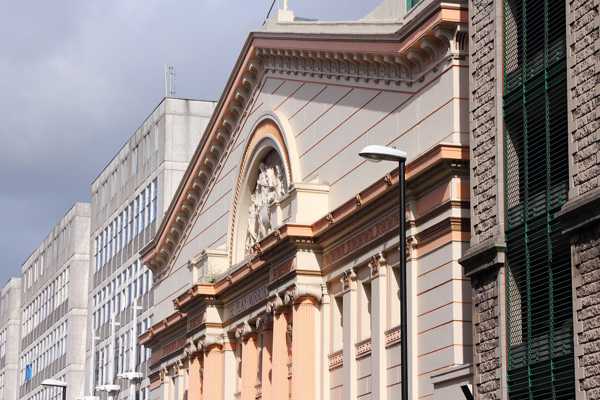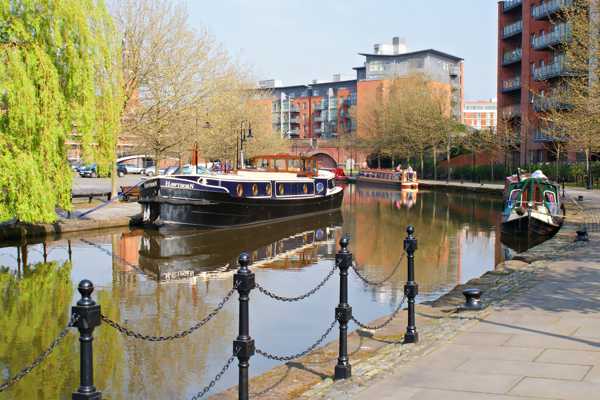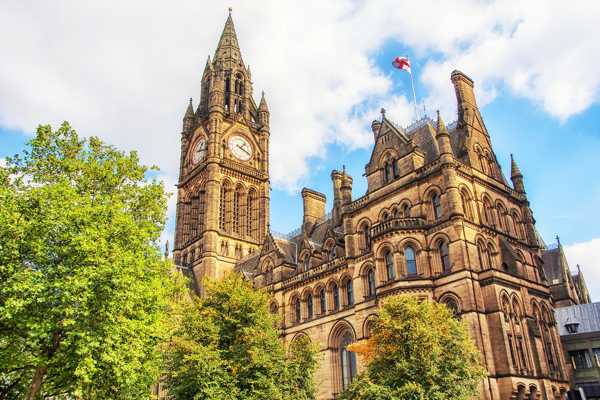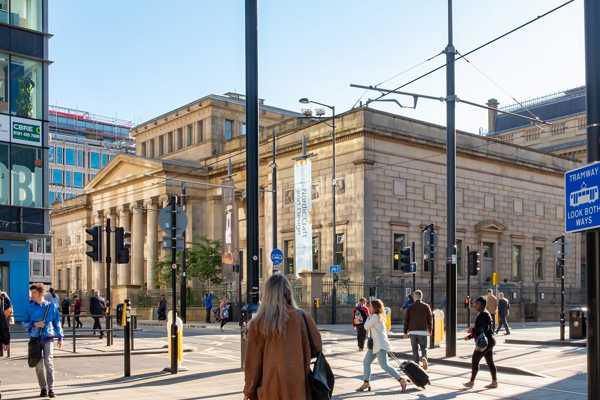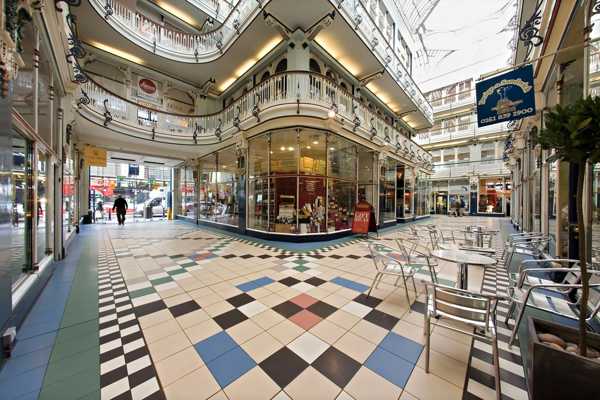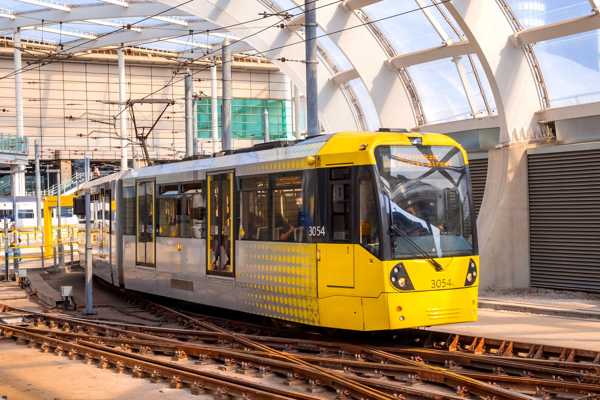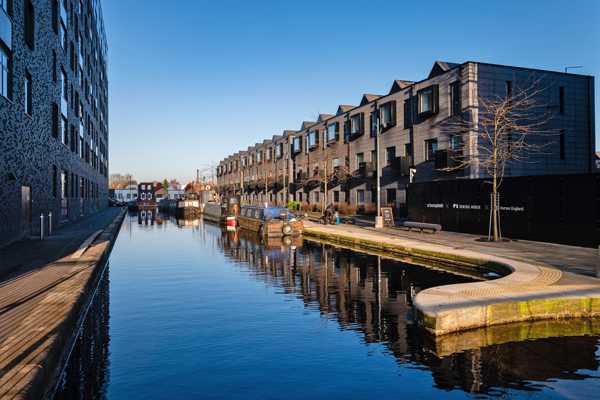The famous streets and squares in Manchester are spaces which give the city its character. Manchester has undergone a renaissance. In the 19th century, it was an industrial powerhouse, experiencing rapid growth. For a while, in the 20th century, it faced an uncertain future as factories closed and the canals which once carried goods became redundant in the face of competition from road hauliers.
Investment and imagination have seen Manchester’s fortunes change. Once again, it is a booming city that is proud of its industrial past but which celebrates the present and looks to the future. Within the central business district and beyond, its streets and squares tell a story of an illustrious city that’s a delight to visit.
What are the most popular streets in Manchester?
- 1
St Peter’s Square
A wealth of history in the heart of Manchester
- Bajet
- Sejarah
- Foto
Baca selanjutnyaSt Peter’s Square is one of Manchester city centre’s most significant open spaces. It’s known as the site of the Peterloo Massacre of 1819. It takes its name from a church that once stood here. Developers knocked it down over a century ago. However, a stone cross in the square reminds people of the contribution it made to the city. Look closely and you’ll see the outline of the church in the paving stones.
St Peter’s Square is home to several buildings of historic interest, such as Manchester Central Library, Midland Hotel, and the Manchester Town Hall Extension. Manchester’s Cenotaph, a statue of the suffragette leader Emmeline Pankhurst and the 1907 sculpture Adrift by John Cassidy are also some of the many must-sees in the square.
Peta - 2
Shambles Square
A historic square with centuries-old pubs
- Bajet
- Sejarah
- Hiburan malam
- Foto
Baca selanjutnyaShambles Square is a historic square in Manchester’s city centre. It takes its name from its former function – ‘shambles’ refers to a street where butchers would slaughter and sell meat. Of course, that wasn’t a clean job, which is why the word now refers to something that’s a mess. The butchers and surrounding market have long gone. What’s there today looks like it has stood there for centuries. Even so, appearances can be misleading.
The square has only existed in its present form since 1999. That is when the 2 historic pubs were moved piece by piece to a new location. The oldest is the Old Wellington Inn, which was originally a private home and drapers shop. It's one of the last surviving Tudor buildings in the city, dating back to 1552. Alongside, you’ll find the mock-Tudor Sinclairs Oyster Bar and the Mitre Hotel, which was built as a tavern in 1815.
Lokasi: 2 Cathedral Gates, Manchester M3 1SW, UK
Peta - 3
Deansgate
A busy thoroughfare bisecting Manchester’s city centre
- Bajet
- Sejarah
- Hiburan malam
- Foto
- Pembeli-belah
Baca selanjutnyaDeansgate is the longest road that runs through the city centre of Manchester, measuring over 1 mile long. It's also one of the city’s oldest streets as it existed in Roman times. Some locals believe its name refers to a lost waterway called the River Dene but there is no strong evidence of that. Deansgate contains a train and metro station and is also on several bus routes.
As you would expect from such a long street, there are lots of important landmarks on Deansgate. There is a statue of Oliver Cromwell – Manchester supported Parliament during the English Civil War. The John Rylands Library, owned by the University of Manchester, is home to rare books and manuscripts. The Moon Under Water, which used to be a cinema, is the largest pub in Britain. There are many other restaurants along this street and big-name retailers such as the Kendals department store.
Petafoto oleh Rept0n1x (CC BY-SA 2.0) diubah suai
- 4
Canal Street
Manchester’s long-established gay nightlife hub
- Bajet
- Sejarah
- Hiburan malam
- Foto
Baca selanjutnyaCanal Street is the focal point for Manchester’s gay scene. It featured prominently in the acclaimed British television series Queer as Folk. Bars, clubs, and restaurants line this road. It follows the northern bank of the Rochdale Canal from Princess Street to Minshull Street. Originally, its pubs and other commercial establishments served people who transited the canal.
Canal Street overlooks Sackville Gardens, on the opposite side of this historic waterway. You'll find memorials for victims of transphobia and HIV, as well as a statue of Alan Turing, the exceptionally talented WWII code-breaker and computer scientist. Shamefully, he was prosecuted in the 1950s under laws persecuting men for being homosexual but he was posthumously pardoned.
Peta - 5
King Street
A shopping street lined with listed buildings
- Bajet
- Sejarah
- Foto
Baca selanjutnyaKing Street in Manchester has traditionally been the home of North West England’s banking industry. Today, that is no longer the case as high-end retail stores have moved in. Jacobites began building here in the 17th century. However, many of its most important buildings are newer. These included the Town Hall at the junction with Cross Street, although it was demolished to make way for an Edwardian Baroque bank in 1913.
The former Bank of England building at number 82 is one of the most distinctive properties on King Street, now maintained by Manchester City Council. Also noteworthy are the Ship Canal House, erected in 1927 as the headquarters of the Manchester Ship Canal, and the Manchester Reform Club, constructed in 1870.
Peta - 6
Albert Square
A magnificent square designed to impress a queen
- Bajet
- Sejarah
- Foto
Baca selanjutnyaAlbert Square in Manchester is named after Prince Albert, Queen Victoria’s husband. Manchester Corporation (now Manchester City Council) wanted to erect a suitably fitting tribute to the Prince Consort. It cleared industrial and commercial buildings to make space for a statue that would sit under an ornate canopy.
A few years later came the Town Hall. Alfred Waterhouse designed a grand bell tower to go with the Victorian Gothic architecture. It was, and still is, the pride of Manchester. Several other monuments and structures accompany them, including a fountain that commemorates Victoria’s Diamond Jubilee.
Peta - 7
St John Street
A unique, tree-lined Georgian street in Manchester

- Bajet
- Sejarah
- Foto
St John Street is arguably the best residential address in Manchester. Built in the late 17th and early 18th century, wealthy barristers and doctors clamoured to buy properties there. Later, the street's convenience and high status made it attractive to professionals who were looking for a prestigious location for an office.
Today, it's the only surviving Georgian street in Manchester. At one end of the street is St John’s Gardens, a small park occupying the site of a church that has since been demolished. At the other lies bustling Deansgate. St John Street is part of a conservation zone, so owners must adhere to strict rules concerning their home’s appearance. That simply helps preserve the character of this special street.
Petafoto oleh Cartridge Save A Day in the Life (CC BY 2.0) diubah suai
- 8
Exchange Square
A pedestrian square with shops, fountains, and outdoor seating

- Bajet
- Keluarga
- Sejarah
- Foto
- Pembeli-belah
Exchange Square in Central Manchester takes its name from the adjacent Corn Exchange, which was built in 1897 to replace an earlier trading house. The square itself was born out of tragedy. When the IRA bombed Manchester in 1996, the subsequent redevelopment turned a neglected and damaged part of the city centre into a pedestrianised square.
Today, the square is thriving. The Arndale Centre, the Corn Exchange Triangle, Selfridges, and Harvey Nichols surround it. Because of this, it is one of the best areas in the city for shopping. Tiered walkways double as seating for events. Dancing fountains with LED lights and animated water jets were unveiled in 2020 as part of a costly revamp.
Petafoto oleh Zack Hallam (CC BY-SA 4.0) diubah suai
- 9
Faulkner Street
Explore the heart of Manchester’s Chinatown

- Makanan
- Sejarah
- Foto
- Pembeli-belah
Faulkner Street is the location of Manchester’s Chinese Imperial Arch, the largest of its kind outside China. It was a gift from Beijing. They sent it to the city in the 1980s inside 3 shipping containers. Specialist Chinese craftsmen assembled it, embellishing them with red and gold paint, as is the tradition. They added decorative ceramics, lacquer, and gold leaf, as well as lucky dragons and phoenixes.
Along with the other Chinatown thoroughfares, Faulkner Street is home to several Chinese restaurants. You can also find Thai, Japanese, Vietnamese and Malaysian restaurants nearby. Also check out the shops, bakeries, and supermarkets selling specialist foods from Asia.
Peta - 10
Anita Street
A pioneering residential development in Ancoats

- Bajet
- Sejarah
- Foto
Anita Street in the Ancoats area of Manchester is one of the city’s best-preserved residential roads. Two immaculate Victorian terraces are still highly sought after today as they were when they were built over a century ago. Back then, the road was called Sanitary Street, a reference to the fact that it was the first in the city to offer residents a flush toilet, running water, and a sink.
Those terraced houses were a welcome sight – very different from the overcrowded and squalid back-to-backs that had sprung up to house mill workers who’d flooded into the city during the Industrial Revolution. In the 1960s, the street was renamed. The 3 letters were gone but not forgotten. The old-fashioned (and very Instagrammable) Anita Street serves as the legacy of those who thought the city’s workers deserved better.
Lokasi: Ancoats, Manchester, UK
Peta



